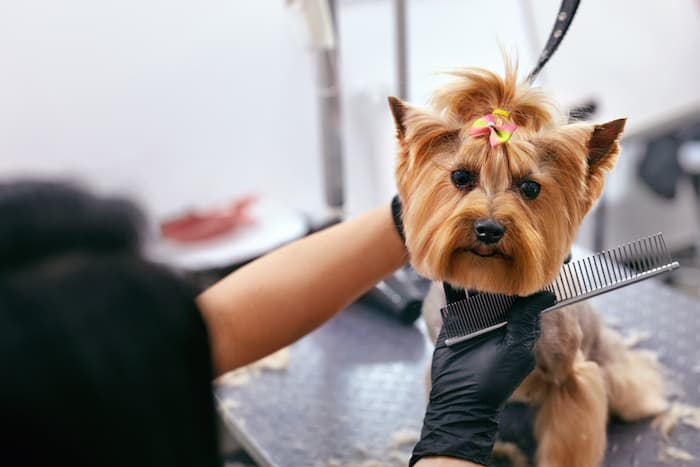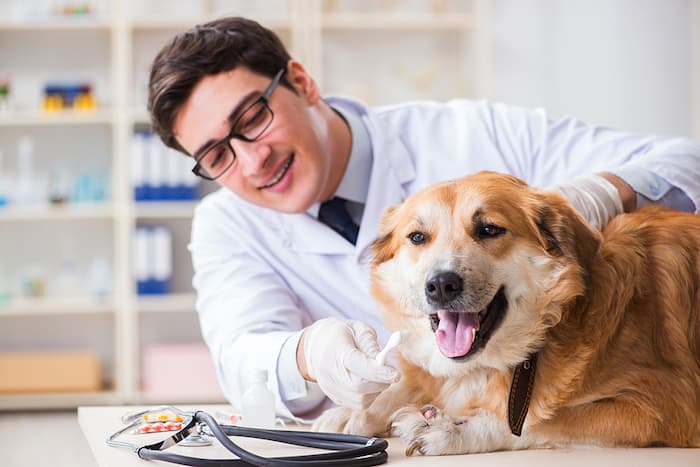If you’re a pet parent who’s wondering how to take care of pets at home, then you aren’t alone.
It is very common to hear people talk about physical health and mental health in these stressful times. These concerns don’t just apply to the humans in your household—your pets’ well-being is very important too!
Let us help you put all your worries regarding your pet’s health to rest.
In this comprehensive guide, we’ve gathered all the information and tips and tricks that you need to take proper care of your pets at home.
Can’t wait to do more for your beloved pet? Let’s jump right in!
Ways to Help Your Pet Thrive When at Home
Nobody has been as happy about the lockdown as our pets. After all, their beloved humans are home to play whenever they want. And honestly? We’ve loved being able to spend afternoons cuddling with them and spending all day within reach.
It’s fun to spend aimless afternoons with your pet, but you both need some structure if you want to remain in peak health.
Here are six ways to keep your dog healthy day in and day out:
It All Starts With a Healthy Diet
At the top of the list is the only thing that your pet loves more than you: food.
From watching their calorie intake to selecting quality nutritious food, there is so much to do as a pet owner. It isn’t inaccurate if we claim feeding a pet is like feeding a newborn child.
It’s a big responsibility!
It’s also the most straightforward answer to the question, how can you take care of your pet animals at home?
There are three factors to consider when setting a healthy diet goal for your pets:
Maintaining a Healthy Weight
Your pet will always ask for more treats and bigger meal portions, but you should never give in. Do your best to avoid both underweight and overweight problems.
When portioning your pet’s meals, consider its age and exercise levels. If you’re not quite sure if you’re giving your pet the right amount of food, consult a vet.
Ensuring Meals Contain All the Essential Nutrients
If you’re making your own pet food at home, then make sure to do your research or consult a veterinarian for the best ingredients to use.
Whether you choose to feed dry or wet food, real food, or vitamin supplements is not entirely up to you. That’s simply because your pet’s digestive system is not like yours. Consider this before putting anything into their food bowl.
Avoiding Harmful Ingredients or Objects
You may have noticed how your pet loves to explore a new object by gnawing on it or licking it. Well, it’s all fun and games until it has ingested something toxic to it!
In such a scenario, help your pet to throw it up immediately.
Now, you might be wondering how to make a dog throw up and whether it is safe to do so?
Throwing up is safe, but only if the ingested item isn’t something like bleach or glass. These items can wreak more havoc if they travel through the digestive system twice, so they are much better off removed by a veterinarian.
In other situations, it is best to call your vet and have them prescribe a dose of hydrogen peroxide to induce vomiting.
Keep Up With Their Grooming Needs
You don’t always have to take your pet to a grooming salon—there’s a lot you can get done at home.
Here are the areas you can cover at home and how often you must include them in your routine:
Bathing
For cats and dogs, the sweet spot is bathing them anywhere between once every three months to once a week, depending on their breed and their shedding level. Puppies and kittens should be bathed more or less often, depending on how dirty they get and their skin sensitivity.
Oral Care
Dental issues in pets are very common, often because their owners don’t realize that their teeth need regular brushing. To prevent plaque buildup, cavities, and gum infections in your pet, brush its teeth daily or on alternate days. You can use a dental brush or a finger glove to maintain oral hygiene.
Nail Care
When it comes to nail trimming, we recommend checking your pet’s nails every week for dryness and damage. Trim them carefully every 2 to 4 weeks.
Coat
Cat hair does not need trimming or clipping unless it grows too long and becomes tangled. With dogs, it is safe to maintain a trimming schedule every 4 to 6 weeks.
When it comes to brushing your pet’s hair, the more frequent, the better. Aim for a brushing session at least once a week, more often if it’s shedding season for your dog (spring and fall).
Ear Cleaning
Dogs’ ears need to be cleaned at least once a month. If they have floppy ears or swim often, more frequent cleaning is required.
With cats, there’s a real risk of over-cleaning their ears. It’s best to check its ears every few weeks and only intervene when you can observe dirt on the outer flap.
Don’t Let Up on Their Daily Physical Exercise
Here’s the third part of the answer to the question, “how do you keep pets healthy?”
By ensuring they get the required physical stimulation for their age and energy levels every day!
For dogs, this is between 30 to 120 minutes of exercise per day, broken up into 2 or 3 periods. The duration of these periods is significantly reduced in puppies and older dogs.
For cats, short walks, chasing lasers, or playing on a cat tower for 15 to 30 minutes should be enough.
The main purpose of this element on how to take care of pets at home is to channel your pet’s energy into the right activity.
Consider Their Mental Stimulation Needs Too!
How can I keep my dog healthy naturally?
Part of the answer to your question is mental stimulation.
Mental stimulation is just as important as regular physical exercise.
Fortunately, there are plenty of sources of mental stimulation: the environment, social and physical engagement, toys, obedience training, and more.
Here are some ways you can contribute to your pet’s mental well-being:
Mentally Stimulating Activities for Dogs and Cats
- Running errands with your pets
- Playing fetch or hunting for objects in and around the house
- Working on new tricks
- Providing ample space to play around the house (vertical space for cats)
- Taking your pets to a park to meet new people and other animals
- Providing interactive games and toys
- Regularly changing workout routines or daily walking route
- Rotating their toys with new and challenging ones
- Allowing them to set the pace for some of your walks around the neighborhood
- Allowing them to sniff and explore the surroundings on their walks
- Incorporating a training routine into a daily activity
- Building a backyard obstacle course
Mental stimulation is vital for pets and comes with many benefits. Here are a few that’ll help you understand the importance of mental stimulation:
Benefits of Mentally Stimulating Activities for Pets
- It keeps them mentally healthy
- It helps them learn positive coping behaviors
- Lowers stress levels
- Wards off boredom
- Curbs destructive behavior
- Offsets excessive physical energy
- Reduces risk of depression
- Lowers risk of cognitive dysfunction
- Minimizes separation anxiety
Create a Safe Environment
A lot goes into creating a safe environment for your pet. If you want to know how to take care of pets at home, here are some safety-related tips:
- Ensure the noise levels in the area are low
- Give your pet a safe corner it can retreat to when it feels overwhelmed or wants to be alone
- Ensure your pet has access to fresh air and water throughout the day
- Check and adjust the temperature to suit your pet’s needs (This depends on your pet’s breed and coat type. A good range in the summer is 70 to 74 degrees Fahrenheit and 69 to 72 degrees in winter.)
Schedule Regular Visits to the Veterinarian
Despite doing your best to be a great pet owner, there are things you might miss. No matter how much knowledge you gain, it can be difficult to tell what’s wrong with your pet without the help of a professional.
This is why you must schedule regular visits to the vet.
If you have a puppy, you must get all the right vaccines at the right time. Here’s a guide on vaccinations for your pet from the American Society for the Prevention of Cruelty to Animals (ASPCA).
Pets do not age the same way humans do, and their health issues are also quite different. Even if you’re the most observant and caring pet parent, it is impossible to be 100% sure that your pet is completely healthy at all times.
The risk of health issues is high in older pets. It’s best to screen for illnesses and diagnose them as early as possible.
In such instances, only a veterinarian knows best how to take care of a pet dog. Make sure to visit them often and let them in on all your worries and troubles.
Veterinary visits are also crucial in preventing and protecting against ticks, fleas, parasites, and infections. A veterinarian can check for these on your regular visits.
Lastly, keep a close eye on your pet’s behavior and routines. Note all the changes that occur and report them to your vet on your visits.
These important tips are sure to keep your pets happy and healthy at all times. It’s essential to keep a close eye on their habits and behaviors—any changes can indicate health problems, lack of stimulation, or other issues that you must address immediately.
Related Reading






